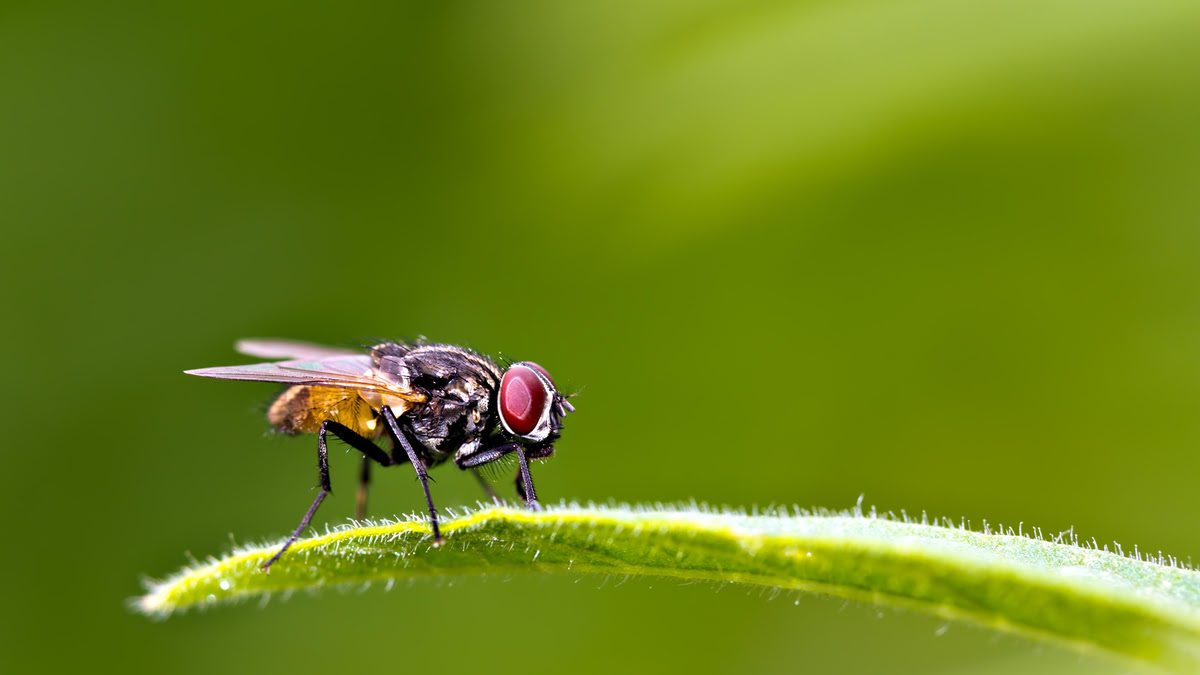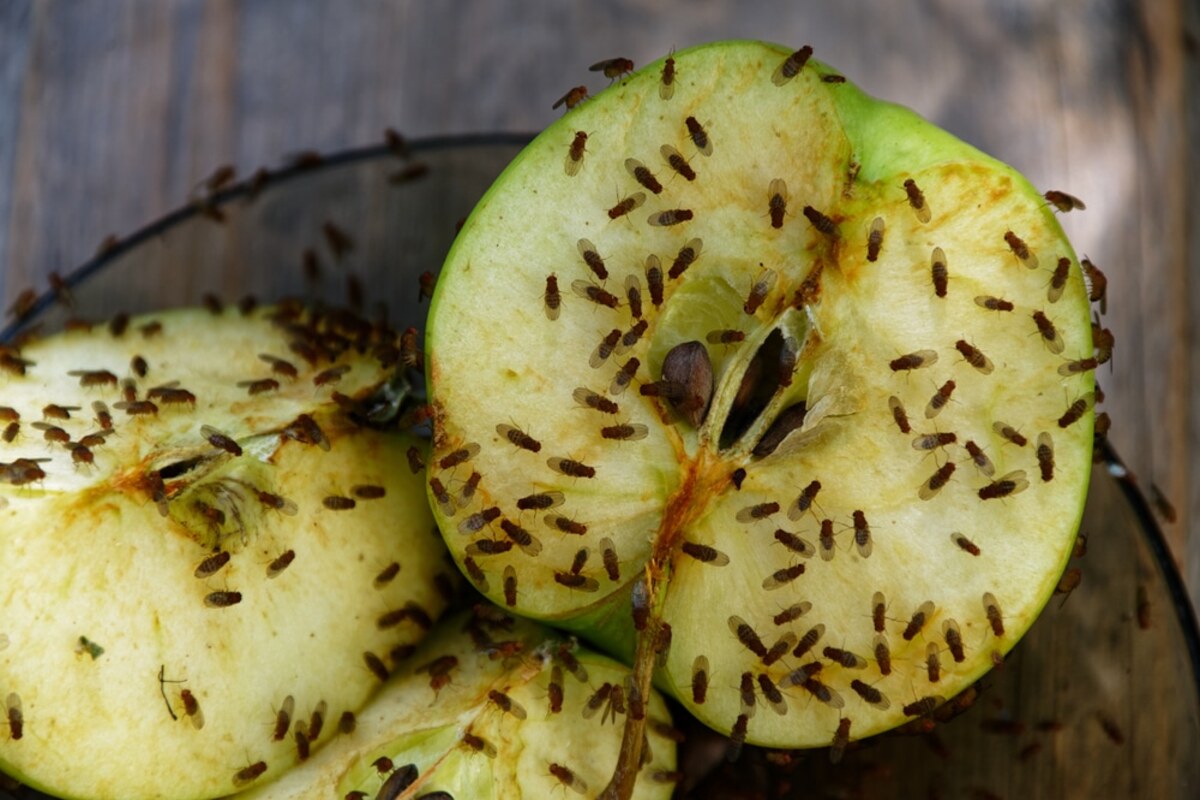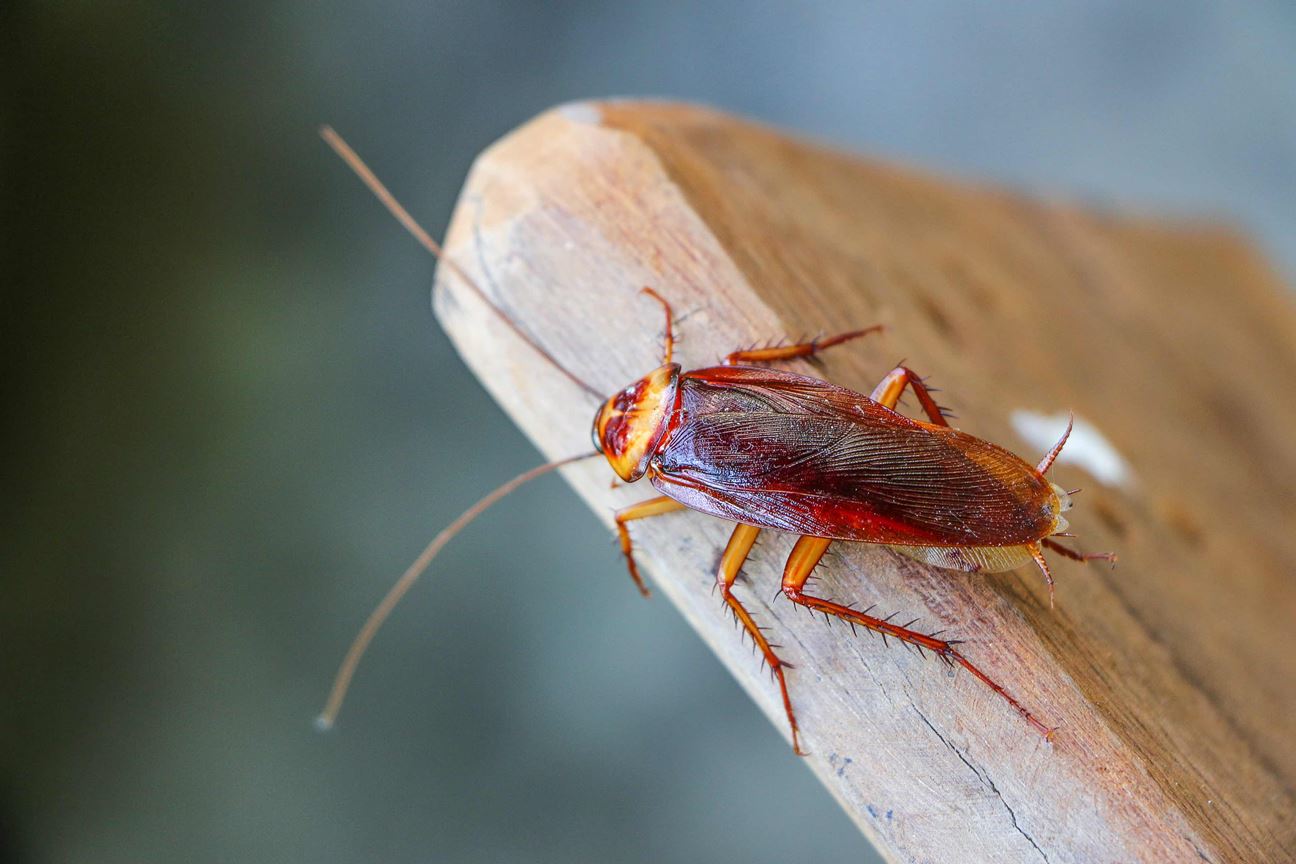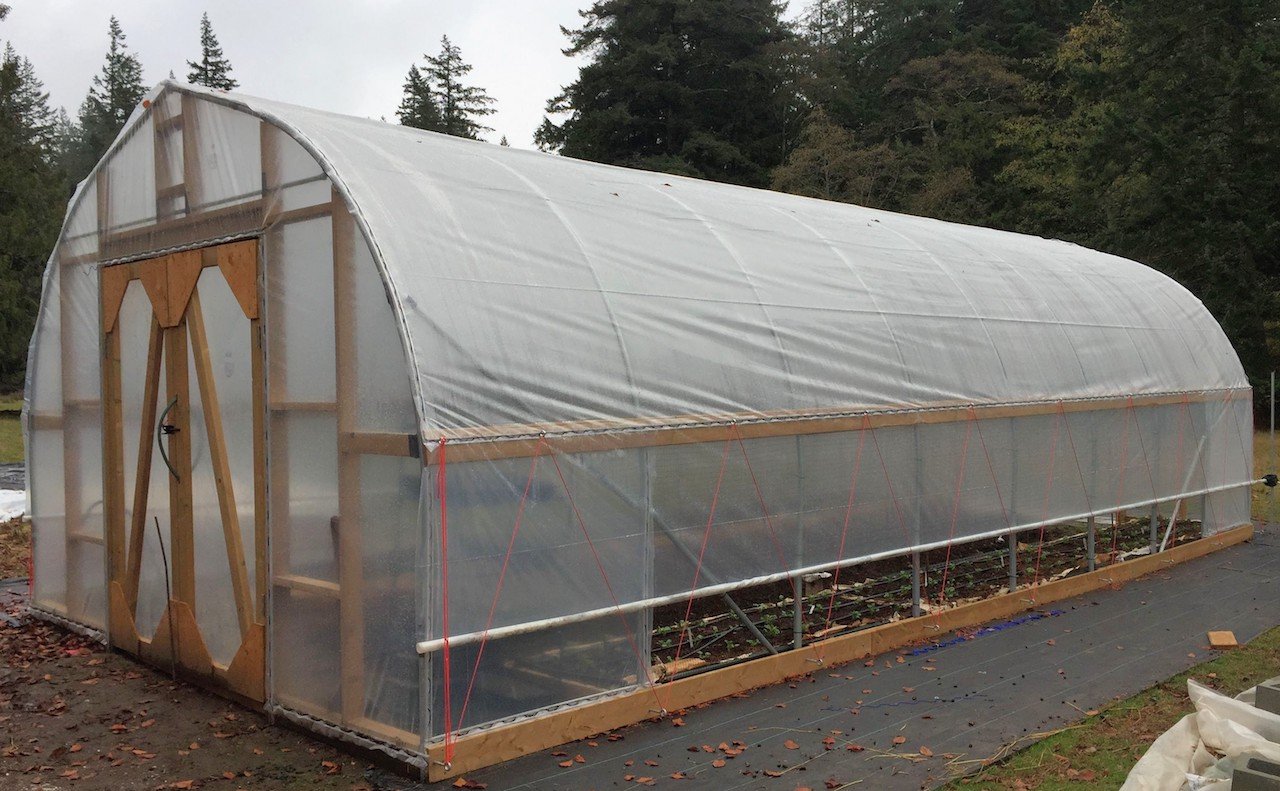Home>Gardening News and Trends>Latest News>How High Do Insects Fly


Latest News
How High Do Insects Fly
Modified: January 22, 2024
Get the Latest News on How High Do Insects Fly! Discover fascinating insights into insect flight and their impressive altitude capabilities.
(Many of the links in this article redirect to a specific reviewed product. Your purchase of these products through affiliate links helps to generate commission for Chicagolandgardening.com, at no extra cost. Learn more)
Table of Contents
- Introduction
- Factors Affecting Insect Flight Altitude
- Adaptations for High Altitude Flight in Insects
- Comparative Analysis of Insect Flight Altitudes
- Role of Environmental Factors in Insect Flight Altitude
- The Interaction Between Insect Flight Altitude and Behavior
- Implications for Ecological Interactions and Ecosystem Functioning
- Conclusion
Introduction
Flight is a remarkable adaptation that has enabled insects to conquer almost every corner of the Earth. From tiny ants to majestic dragonflies, insects exhibit a wide range of flying abilities. One fascinating aspect of insect flight is the altitude at which they can soar. Have you ever wondered how high insects can actually fly?
Understanding the factors that affect insect flight altitude is not only intriguing from a scientific perspective but also has important ecological implications. Insect flight altitude can influence their interactions with other organisms, their dispersal patterns, and ultimately their impact on ecosystems. In this article, we will delve into the world of insect flight altitude, exploring the factors that determine how high insects can fly and the implications of their flight behavior.
Insects’ flight altitude is influenced by several factors, including their anatomy, physiology, and behavior. Wing morphology, muscle power, and metabolic rate all contribute to the ability of insects to reach different altitudes. For instance, some insects, like bees and butterflies, have relatively large wings and powerful wing muscles, allowing them to achieve higher flight altitudes compared to others.
Furthermore, the flight altitude of insects can also be influenced by environmental factors. Wind patterns, temperature variations, and atmospheric conditions play a significant role in determining how high insects can go. Certain insects, such as locusts, take advantage of favorable winds and thermal updrafts to achieve remarkable heights during their migratory journeys.
Interestingly, insect flight altitude is not solely a matter of physical abilities and environmental conditions. The altitude at which insects fly is also intricately linked to their behavioral traits. Some insects, like mosquitoes, exhibit a preference for low-altitude flight, as they rely on specific environmental cues and host detection mechanisms. On the other hand, certain pollinators, such as bumblebees, are known to fly at different altitudes depending on the availability of floral resources.
The significance of insect flight altitude extends beyond the individual level. It can shape ecological interactions and ecosystem functioning. For instance, high-altitude fliers like dragonflies play a crucial role in maintaining balance in aquatic ecosystems by preying on mosquito larvae. Similarly, insect migration at different altitudes can influence the spread of diseases, the genetic diversity of populations, and the pollination of flowering plants.
Through this article, we will explore the intricate world of insect flight altitude, providing insights into the factors that determine how high insects can fly. From adaptations for high-altitude flight to the implications for ecological interactions, understanding insect flight altitude will deepen our understanding of these remarkable creatures and their vital role in our ecosystems.
Factors Affecting Insect Flight Altitude
The altitude at which insects can fly is influenced by various factors, including their physiological adaptations, anatomy, and behavior. By understanding these factors, we can unravel the secrets behind their remarkable flight abilities.
1. Anatomy and Physiology: Insects with larger wings and stronger flight muscles have the potential to achieve greater flight altitudes. The size and shape of wings, along with muscle power, play a crucial role in determining the lift and thrust generated during flight. Certain insect groups, such as dragonflies and hawkmoths, have evolved longer and broader wings that enable them to reach impressive altitudes.
2. Metabolic Rate: The metabolic rate of an insect, or its ability to convert energy from food into work, affects its flight altitude. Insects with higher metabolic rates can maintain flight for longer periods, allowing them to ascend to greater heights. For example, bees and bumblebees have high metabolic rates that enable them to sustain their flight even at higher altitudes.
3. Environmental Factors: The surrounding environment plays a crucial role in shaping insect flight altitudes. Wind currents, temperature gradients, and atmospheric conditions impact the ability of insects to ascend or descend. Some insect species, like migratory locusts, take advantage of favorable wind patterns and thermal updrafts to achieve extraordinary flight altitudes during their long-distance journeys.
4. Behavioral Preferences: Insect flight altitude is not solely determined by physical factors but is also influenced by behavioral traits. Some insects exhibit a preference for low-altitude flight, staying close to the ground to locate specific resources or detect hosts. Mosquitoes, for instance, tend to fly at lower altitudes to find suitable breeding sites and access hosts for blood meals. In contrast, other insects, like certain bees and butterflies, are known to fly at different altitudes depending on the availability of nectar-rich flowers.
5. Species-Specific Adaptations: Each insect species has its unique set of adaptations that play a role in flight altitude. Some insects have specialized body structures or behaviors that allow them to thrive at certain altitudes. For example, high-altitude fliers like damselflies have slender bodies and flexible wings that provide maneuverability in windy conditions. On the other hand, low-altitude fliers like beetles rely on specialized appendages, such as elytra, for short-distance flights.
By considering the interplay of these factors, we can gain a deeper understanding of how insects achieve different flight altitudes. The combination of anatomical, physiological, environmental, and behavioral factors shapes the intricate world of insect flight and influences their ecological interactions and impact on ecosystems.
Adaptations for High Altitude Flight in Insects
High altitude flight in insects requires specialized adaptations to cope with the challenges posed by thinner air, colder temperatures, and increased wind speeds. Through a range of anatomical, physiological, and behavioral adaptations, insects have evolved to thrive at impressive flight altitudes.
1. Wing Morphology: Insects that engage in high altitude flight often have longer and narrower wings compared to their low-altitude counterparts. This wing morphology allows for better maneuverability and increased lift in thin air. Dragonflies, for example, possess elongated wings that enable them to navigate effectively at high altitudes.
2. Respiratory System: Insects have a highly efficient tracheal system that facilitates gas exchange and oxygen uptake. To compensate for lower oxygen levels at high altitudes, some insects have developed enlarged spiracles and increased tracheal branching, enabling them to extract oxygen more effectively. This adaptability allows insects like butterflies and bees to maintain flight at considerable heights.
3. Energy Conservation: High altitude flight requires energy efficiency. To conserve energy during prolonged flights, insects engage in a variety of strategies. Some insects, such as butterflies, exhibit a gliding behavior that reduces energy expenditure. Others, like bumblebees, can adjust their flight speed and wingbeat frequency to maximize energy conservation during long-distance flights.
4. Thermoregulation: Insects at high altitudes often encounter colder temperatures. To withstand these conditions, they employ thermoregulatory mechanisms. Some insects, like certain species of flies, have dark pigments on their wings and bodies that absorb more heat from sunlight, effectively warming their flight muscles. This adaptation enables them to maintain their flight performance even in colder environments.
5. Behavioral Strategies: In addition to physiological adaptations, insects also utilize behaviors to aid high altitude flight. For instance, some migratory species, like monarch butterflies, take advantage of favorable wind patterns known as “aerial highways.” These butterflies use updrafts and downdrafts to maintain altitude and conserve energy during their long-distance journeys.
Combining these adaptations allows insects to thrive and successfully navigate the challenges of high altitude flight. The ability to fly at greater heights provides advantages such as expanded foraging opportunities, efficient migration, and access to less crowded ecological niches. Furthermore, high altitude flight can also serve as a defense mechanism against predators and parasites, as these environments may be less hospitable to certain natural enemies.
Overall, the adaptations observed in insects engaging in high altitude flight showcase the remarkable resilience and adaptability of these small creatures. By understanding these adaptations, scientists gain insights into the intricate balance between physiology, behavior, and environmental conditions that contribute to the phenomenon of high altitude insect flight.
Comparative Analysis of Insect Flight Altitudes
Insects exhibit a wide range of flight altitudes, varying from low hovering to soaring to great heights. By comparing the flight altitudes of different insect species, we can gain valuable insights into their unique capabilities and ecological roles.
1. Low Altitude Fliers: Some insect species predominantly fly at low altitudes, staying close to the ground or vegetation. This behavior allows them to effectively search for resources such as food, mates, or breeding sites. Examples of low altitude fliers include bees, butterflies, and hoverflies. These insects often rely on visual cues and scent trails to guide their flight and locate suitable resources.
2. Mid-Level Fliers: Many insect species occupy the mid-level flight zone, which ranges from a few meters to tens of meters above the ground. This altitude provides a balance between accessibility to resources and safety from ground-based predators. Flies, beetles, and certain wasp species are known to occupy this flight zone. They demonstrate agile and precise flight movements to navigate complex environments, such as dense vegetation or tree canopies.
3. High Altitude Fliers: Some insects have impressive capabilities to ascend to great heights, reaching altitudes far above the ground. Dragonflies, damselflies, migratory locusts, and certain butterfly species are known for their high altitude flight. These insects can reach several hundred meters or even thousands of meters above the ground. Their flight adaptations, including long and narrow wings and efficient respiratory systems, enable them to navigate through thin air and windy conditions.
4. Seasonal Migrators: Seasonal migratory insects, such as monarch butterflies and certain locust species, exhibit a wide range of flight altitudes depending on the stage of their migration. During their long-distance journeys, these insects can change their flight altitudes to take advantage of wind patterns and thermal updrafts. By flying at higher altitudes, they reduce energy expenditure and increase their chances of reaching their destination efficiently.
Comparing the flight altitudes of different insect species provides valuable ecological insights. Insects that fly at different heights have varying interactions with their environment and play distinct roles in ecosystem functioning. For example, low altitude fliers like bees and butterflies are crucial pollinators of flowering plants at ground level, while high altitude fliers like dragonflies contribute to pest control by preying on insects in the air.
Understanding the comparative analysis of insect flight altitudes allows scientists to appreciate the diversity of flight behaviors and adaptability among different insect groups. It provides a deeper understanding of the multifaceted ways in which insects interact with their surroundings and contribute to the functioning of ecosystems.
Role of Environmental Factors in Insect Flight Altitude
The flight altitude of insects is strongly influenced by environmental factors that shape their flight capabilities and behaviors. Understanding the role of these environmental factors provides crucial insights into the distribution, population dynamics, and ecological interactions of insects.
1. Wind Patterns: Wind currents play a significant role in determining insect flight altitudes. Insects can take advantage of favorable wind patterns, such as tailwinds or updrafts, to optimize their flight efficiency and reach higher altitudes. This is particularly evident in migratory species, like locusts and monarch butterflies, which utilize wind patterns to facilitate long-distance journeys across vast regions.
2. Temperature Gradients: Temperature variations in the surrounding environment influence insect flight altitude. Warmer temperatures at lower altitudes can create thermal updrafts, which provide upward air currents that insects can ride to gain altitude. In contrast, cooler temperatures at higher altitudes can limit the flight capabilities of certain insects. Understanding these temperature gradients helps us comprehend the altitudinal ranges and distribution patterns of different insect species.
3. Atmospheric Conditions: Atmospheric conditions, such as air density and oxygen levels, directly affect the ability of insects to fly at different altitudes. Insects rely on the availability of sufficient oxygen for their metabolic processes during flight. The lower oxygen concentration at higher altitudes can limit the flight capabilities and endurance of certain species.
4. Vegetation Structure: The structure and density of vegetation also influence insect flight altitudes. Dense vegetation can restrict the upward flight movement of insects, forcing them to fly at lower altitudes. In contrast, open habitats or areas with tall vegetation may allow insects to explore higher altitudes with fewer obstacles. This impacts the distribution and habitat selection of different insect species.
5. Seasonal and Geographic Variation: Insect flight altitudes can exhibit seasonal and geographic variation due to the changes in environmental conditions. For example, during warmer seasons, insects may have increased flight activity and may venture higher to reach resources like flowering plants or breeding sites. Similarly, insects in different regions may adapt their flight behavior to local environmental conditions, resulting in variations in flight altitudes among populations.
By considering the role of these environmental factors, we can gain a better understanding of how insects interact with their surroundings and adapt to different flight altitudes. This knowledge aids in predicting and explaining the distribution patterns, migratory behaviors, and ecological roles of insects in various ecosystems.
The Interaction Between Insect Flight Altitude and Behavior
The flight altitude of insects has a profound impact on their behavior, foraging strategies, reproductive success, and overall ecological interactions. Understanding the intricate relationship between flight altitude and behavior provides key insights into the lives of these remarkable creatures.
1. Foraging Strategies: Insects that fly at different altitudes often have distinct foraging strategies. Low altitude fliers, such as bees and butterflies, primarily visit flowers and plants at ground level to obtain nectar or pollen. They have specialized adaptations to navigate dense vegetation and detect suitable floral resources. In contrast, high altitude fliers, such as dragonflies, have a broader range of insect prey available to them. They actively hunt for prey in the air, taking advantage of their aerial prowess.
2. Mating and Reproduction: Flight altitude plays a crucial role in the mating behaviors and reproductive success of insects. Many insects engage in courtship displays and aerial acrobatics to attract mates. The altitude at which these displays occur can influence mate choice and signal quality. Some insects even engage in elaborate courtship flights at specific altitudes to synchronize their mating behaviors.
3. Dispersal and Migration: Insect flight altitude is closely linked to their dispersal and migration patterns. Insects capable of high altitude flight can cover vast distances and disperse to new territories, colonizing new habitats and contributing to genetic diversity. Migratory species, such as monarch butterflies, navigate through different altitudes during their long-distance journeys, utilizing wind patterns and thermal updrafts to optimize their flight efficiency.
4. Avoiding Predators and Parasites: Flight altitude can serve as a defense mechanism for insects, allowing them to escape from ground-based predators and parasites. By flying at higher altitudes, insects reduce their risk of predation and increase their chances of survival. Certain parasitic wasps and flies also exhibit altitude-specific behaviors, targeting hosts at particular flight altitudes.
5. Interactions with Other Species: Insect flight altitude influences their interactions with other species in their ecosystem. Pollinating insects, such as bees and butterflies, are key contributors to plant reproduction. Their flight altitudes determine the plants they visit, which, in turn, impacts pollination dynamics. Similarly, high altitude fliers like dragonflies play a vital role in maintaining ecological balance by preying on insect pests in the air.
Understanding the interaction between flight altitude and behavior allows us to uncover the intricate connections between insects and their environment. It sheds light on the adaptive strategies, ecological roles, and evolutionary dynamics of these fascinating creatures.
Implications for Ecological Interactions and Ecosystem Functioning
The flight altitude of insects has significant implications for ecological interactions and the functioning of ecosystems. The diverse flight capabilities of insects shape their interactions with other organisms and contribute to the overall balance and biodiversity of ecosystems.
1. Pollination: Insects play a crucial role in pollination, transferring pollen from one flower to another, facilitating plant reproduction. The flight altitudes of pollinators determine the plants they visit and the distance over which they can disperse pollen. Bees and butterflies, which typically fly at low to mid-level altitudes, are vital pollinators for many flowering plants, contributing to plant diversity and overall ecosystem health.
2. Predation and Pest Control: Insects that fly at higher altitudes, such as dragonflies and predatory wasps, serve as important predators in the ecosystem. They help control insect populations by preying on pest species, limiting their numbers and preventing outbreaks. This top-down regulation of insect populations has far-reaching implications for crop production, plant health, and the overall balance of ecological communities.
3. Seed Dispersal: Insects that engage in high altitude flight, particularly migratory species, can facilitate long-distance seed dispersal. Their ability to cover large distances allows for the transport of plant seeds to new habitats, contributing to the establishment and expansion of plant populations. This dispersal mechanism contributes to the spread of plant diversity and the colonization of different ecological niches.
4. Ecosystem Services: Insects provide numerous ecosystem services that are essential for human well-being. From pollination to nutrient cycling and decomposition, their diverse flight altitudes ensure the efficient functioning of ecosystems. By maintaining the balance of plant communities, insects contribute to the productivity and resilience of ecosystems, ultimately benefiting the provision of food, clean air, and other ecosystem services.
5. Global Ecological Networks: The flight altitudes of migratory insects, such as butterflies and locusts, connect different ecosystems on a global scale. These insects can traverse vast distances, linking habitats and facilitating gene flow between populations. Moreover, their seasonal movements contribute to the cycling of nutrients and energy, influencing ecosystem dynamics across geographic boundaries.
Understanding the implications of insect flight altitude for ecological interactions and ecosystem functioning allows us to appreciate the intricate web of relationships that exist in natural systems. The conservation and management of insect populations, their habitats, and the surrounding environments are crucial for maintaining these interactions and ensuring the resilience and stability of ecosystems in the face of environmental changes.
Conclusion
Insect flight altitude is a fascinating aspect of their adaptive abilities that influences their behavior, ecological interactions, and ecosystem functioning. Through a combination of anatomical, physiological, and behavioral adaptations, insects have evolved to thrive at different altitudes, from low hovering to soaring to great heights.
Factors such as wing morphology, muscle power, metabolic rate, and environmental conditions shape the flight altitudes of insects. Wind patterns, temperature variations, and atmospheric conditions play significant roles in determining how high insects can fly. Furthermore, the interplay between flight altitude and behavioral preferences influences foraging strategies, mating behaviors, dispersal patterns, and interactions with other organisms.
The implications of insect flight altitude extend beyond the individual level. Pollination, predation, seed dispersal, and other ecosystem services are all influenced by the flight capabilities and behaviors of insects. Insects that fly at different altitudes contribute to the diversity and productivity of ecosystems, maintaining ecological balance and providing essential services that benefit human well-being.
Understanding the intricate relationship between flight altitude and behavior enhances our knowledge of the ecological roles and adaptations of insects. It allows us to appreciate the interconnectedness of different species, habitats, and environmental factors in shaping the functioning of ecosystems.
As we continue to study and explore the world of insects, uncovering the secrets of their flight altitudes, it is crucial to recognize the importance of conserving and protecting these remarkable creatures and their habitats. Preserving insect populations and their natural environments ensures the stability and sustainability of ecosystems and the ecosystem services they provide.
Insect flight altitude is a testament to the adaptability, resilience, and complexity of these small but mighty organisms. By unraveling the mysteries of their flight capabilities, we gain a deeper appreciation for the wonders of the natural world and the crucial role insects play in maintaining the delicate balance of our planet.










